Hematite ridge - a new hope for astrobiologists
Scientists have identified the most interesting object of the upcoming Curiosity study, where there is the highest probability of detecting signs of past Martian life.
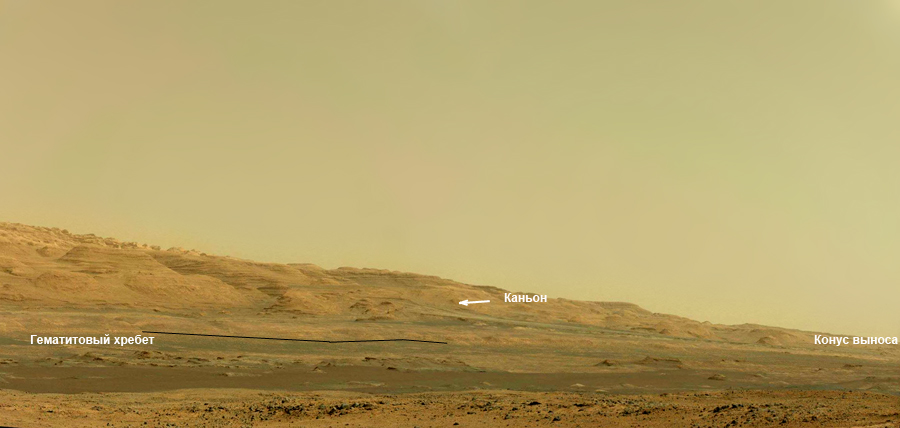
The main geological rock that previously attracted NASA geologists in the Gale Crater is phyllosilicates or smectites - clay that arose when volcanic rocks were washed away by fresh water. This clay is the main evidence that Mars was once a warm, humid and liveable place.
However, a recent study published in the journal Geology has reduced the priority of smectites, and now scientists are more attracted to the hematite ridge, which lies on the proposed path of the rover to the mountain.
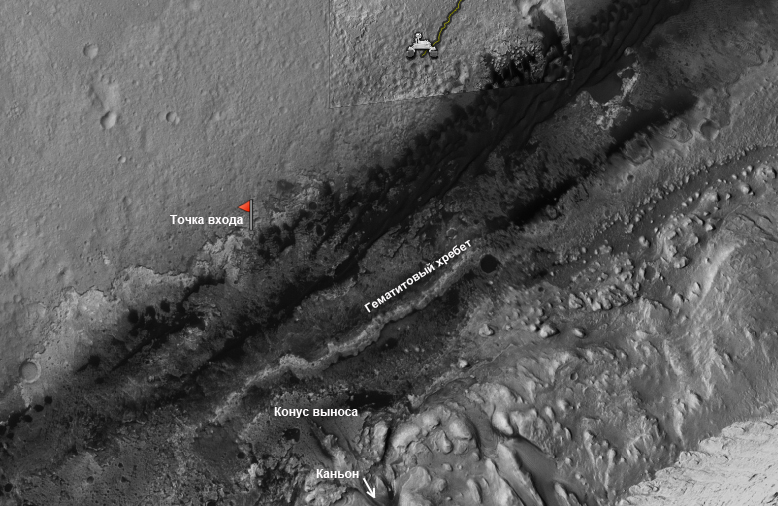
While Curiosity moves to the Entry Point - a conditional place from where the main scientific program will begin, which has the prospect of identifying the signs of ancient Martian life. The long hollow that stretches along the foot of Mount Sharpe has a smectite bottom, and from the Entry Point, it is separated just by the Hematite ridge.
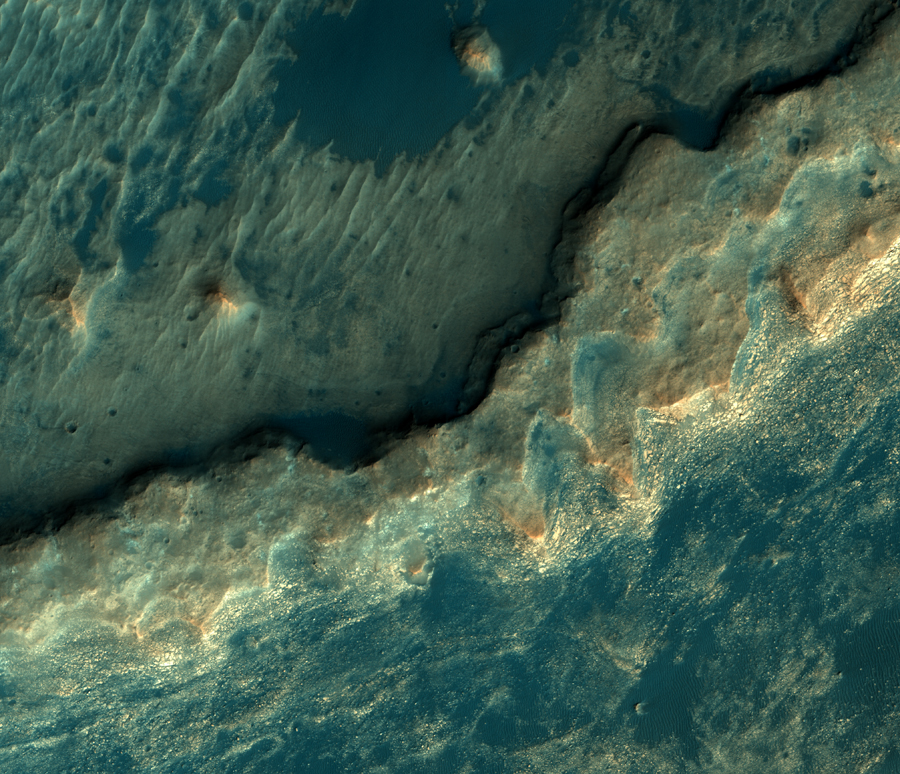
From the Entry Point, the Curiosity path will stretch almost perpendicular to the current trajectory: it will cross the smectite hollow and begin to climb through the canyon cut out by water in the mountain. Preliminarily study the removal cone of this canyon.
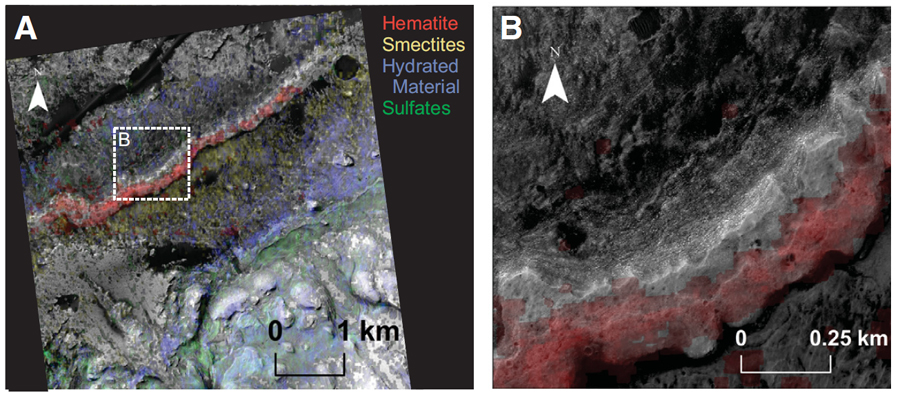
A hematite ridge runs across the future trajectory of the rover. It recently got its name for large deposits of iron, in the form of hematite, which are determined using a CRISM spectrometer from the MRO satellite.
Hematite is a form of iron ore with a characteristic rounded structure.
Iron balls called "blueberries" were found in abundance on the plain of Meridian, where Opportunity works, but it does not have such a powerful scientific arsenal as Curiosity, so there has long been lost interest in these balls.

The hematite ridge has a width of about 200 m and stretches along the mountain for about 6.5 km. Apparently, this relief element belongs to the so-called. “Inverted channels”. Such surface forms are not uncommon on Mars. Presumably they formed where the river flowed. The impact of water changed the structure of the bottom, providing a cementing effect. When, however, the water evaporated or froze, erosion began to destroy the surface of the coast, and the wind carried away loose fragments. As a result, the former banks were so destroyed that they were below the former bottom of the river. On Mars, there are even craters on the contrary.
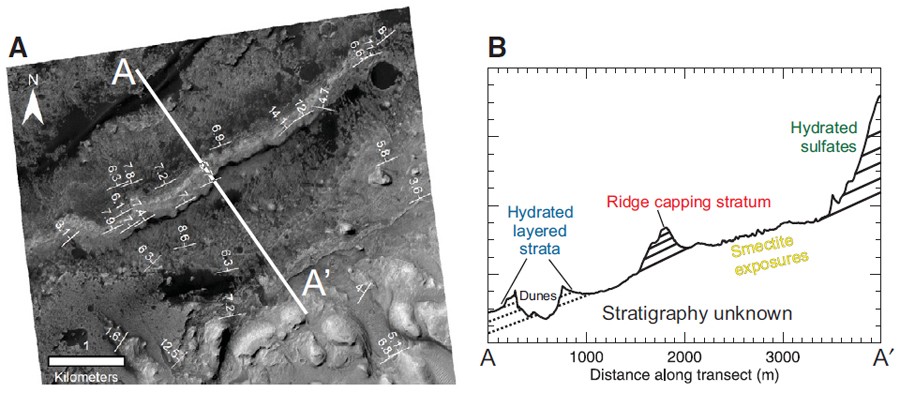
How true is the proposed mechanism for the formation of “inverted channels” Curiosity remains to be studied. But at the Hematite ridge, he still has to understand the reason for the appearance of such localized hematite deposits.
Looking from above, geologists proposed two hypotheses for the formation of deposits:
1) Ground water with a low content of dissolved oxygen carried a large amount of dissolved iron. Where later the Hematite ridge appeared, this water came to the surface and met either with an oxygen-rich atmosphere or with a high acidity water stream.
2) The flow of water, with high acidity (presumably dissolved sulfuric acid, from large-scale volcanic eruptions), eroded volcanic olivine rocks, and deposited iron washed from them.
The rover will tell in which of two scenarios the Hematite ridge appeared. Although, it is possible that the results of research from the surface will require a new theory. The incompleteness of satellite data has already fully manifested itself in Glenelga, so no one can guarantee that the finds on the surface will fully correspond to the analysis from space.
Now the intrigue: scientists say that both of these processes of hematite formation, which are observed on Earth, pass with the participation of chemolithotrophic bacteria.
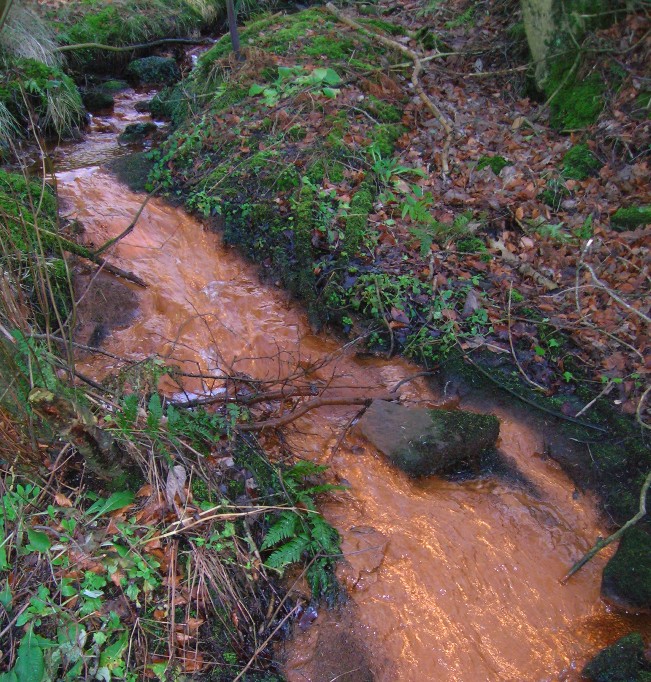
This implies that the hematite ridge could have arisen with the participation of Martian microorganisms. Even if they have become extinct for a long time, Curiosity will be able to determine the characteristics of organic substances in the breed, and this is exactly what you need.
It is curious that now chemolithotrophs are used to produce methane from organics. Methane, however, remains one of the most outstanding mysteries of Mars.
Spectrometers from the Earth found an abnormal concentration of methane in the atmosphere:
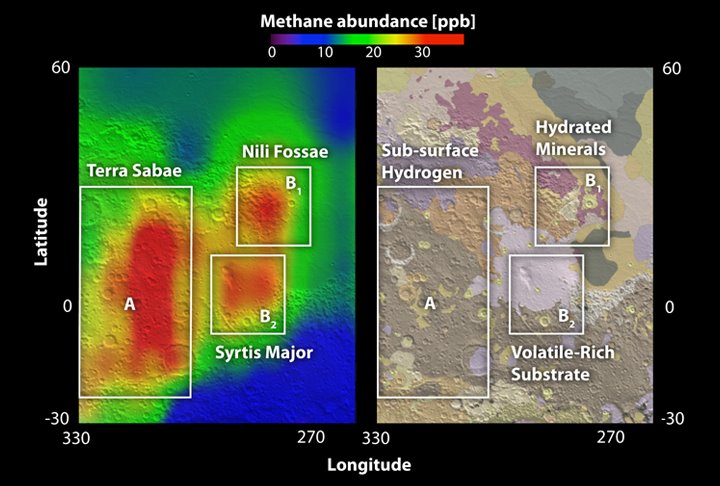
But Curiosity from the surface - did not find .
This may indicate both the fallacy of one of the research tools and the seasonality or locality of methane emission on the surface. Seasonality and locality are very interesting. If gas is released in specific areas, this may indicate potential deposits. Such a find will turn all ideas about the prospects for the development or even settlement of the Red Planet.
In any case, work from the Entry Point promises to be more interesting than all previous experience, and give so much information about Mars that NASA will be raking for several years. I hope then we will hear the answer to the main question of life on Mars, the Universe and everything else ...
PS We are collecting signatures here to somehow invigorate the Russian interplanetary program. Glad any help.

The main geological rock that previously attracted NASA geologists in the Gale Crater is phyllosilicates or smectites - clay that arose when volcanic rocks were washed away by fresh water. This clay is the main evidence that Mars was once a warm, humid and liveable place.
However, a recent study published in the journal Geology has reduced the priority of smectites, and now scientists are more attracted to the hematite ridge, which lies on the proposed path of the rover to the mountain.

While Curiosity moves to the Entry Point - a conditional place from where the main scientific program will begin, which has the prospect of identifying the signs of ancient Martian life. The long hollow that stretches along the foot of Mount Sharpe has a smectite bottom, and from the Entry Point, it is separated just by the Hematite ridge.

From the Entry Point, the Curiosity path will stretch almost perpendicular to the current trajectory: it will cross the smectite hollow and begin to climb through the canyon cut out by water in the mountain. Preliminarily study the removal cone of this canyon.

Anaglyph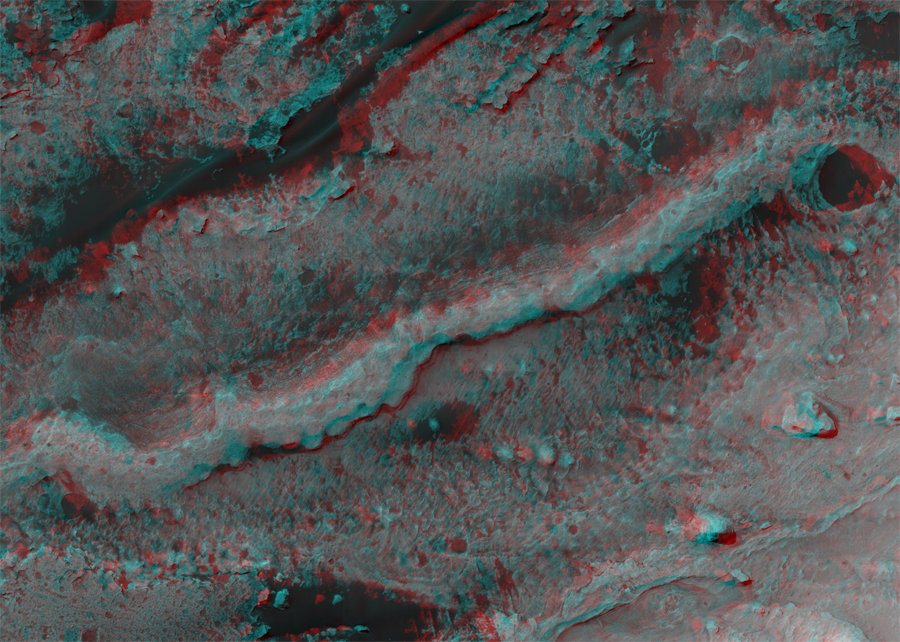

A hematite ridge runs across the future trajectory of the rover. It recently got its name for large deposits of iron, in the form of hematite, which are determined using a CRISM spectrometer from the MRO satellite.
Hematite is a form of iron ore with a characteristic rounded structure.
Iron balls called "blueberries" were found in abundance on the plain of Meridian, where Opportunity works, but it does not have such a powerful scientific arsenal as Curiosity, so there has long been lost interest in these balls.

The hematite ridge has a width of about 200 m and stretches along the mountain for about 6.5 km. Apparently, this relief element belongs to the so-called. “Inverted channels”. Such surface forms are not uncommon on Mars. Presumably they formed where the river flowed. The impact of water changed the structure of the bottom, providing a cementing effect. When, however, the water evaporated or froze, erosion began to destroy the surface of the coast, and the wind carried away loose fragments. As a result, the former banks were so destroyed that they were below the former bottom of the river. On Mars, there are even craters on the contrary.

How true is the proposed mechanism for the formation of “inverted channels” Curiosity remains to be studied. But at the Hematite ridge, he still has to understand the reason for the appearance of such localized hematite deposits.
Looking from above, geologists proposed two hypotheses for the formation of deposits:
1) Ground water with a low content of dissolved oxygen carried a large amount of dissolved iron. Where later the Hematite ridge appeared, this water came to the surface and met either with an oxygen-rich atmosphere or with a high acidity water stream.
2) The flow of water, with high acidity (presumably dissolved sulfuric acid, from large-scale volcanic eruptions), eroded volcanic olivine rocks, and deposited iron washed from them.
The rover will tell in which of two scenarios the Hematite ridge appeared. Although, it is possible that the results of research from the surface will require a new theory. The incompleteness of satellite data has already fully manifested itself in Glenelga, so no one can guarantee that the finds on the surface will fully correspond to the analysis from space.
Now the intrigue: scientists say that both of these processes of hematite formation, which are observed on Earth, pass with the participation of chemolithotrophic bacteria.

This implies that the hematite ridge could have arisen with the participation of Martian microorganisms. Even if they have become extinct for a long time, Curiosity will be able to determine the characteristics of organic substances in the breed, and this is exactly what you need.
It is curious that now chemolithotrophs are used to produce methane from organics. Methane, however, remains one of the most outstanding mysteries of Mars.
Spectrometers from the Earth found an abnormal concentration of methane in the atmosphere:

But Curiosity from the surface - did not find .
This may indicate both the fallacy of one of the research tools and the seasonality or locality of methane emission on the surface. Seasonality and locality are very interesting. If gas is released in specific areas, this may indicate potential deposits. Such a find will turn all ideas about the prospects for the development or even settlement of the Red Planet.
In any case, work from the Entry Point promises to be more interesting than all previous experience, and give so much information about Mars that NASA will be raking for several years. I hope then we will hear the answer to the main question of life on Mars, the Universe and everything else ...
PS We are collecting signatures here to somehow invigorate the Russian interplanetary program. Glad any help.
